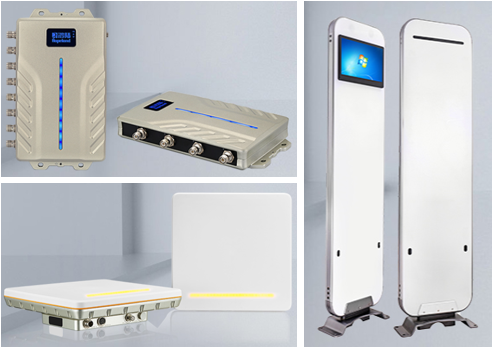![]()
Click:925 Time:2023-03-29
RFID reader/writer application scenario
RFID readers can be seen in every aspect of life, shopping, production, and transportation. Asset management, petroleum mining, equipment management, logistics and transportation, ETC, warehouse management, production lines, parts management, medical equipment, pallets, sterilization and disinfection processes, and even data centers, electronic products, clothing, and book borrowing. Intelligence and automation are the development direction of modern society.
In these different application scenarios, using appropriate RFID reading and writing devices that meet the functional requirements of information management can greatly improve system reading efficiency and reduce costs. The following are important reference performances for several reader/writer choices:
1. Operating frequency: Operating frequency can be divided into US (American Standard) and EU (British Standard) according to different regional standards. There are also Global (Global) frequency options suitable for wider frequencies. In addition to RFID, many readers and writers are also compatible with NFC frequencies
2. Reading distance: Select a reader/writer with an appropriate reading distance based on the site of use to avoid situations such as unreadable, excessive, missed, or skipped reads. The reading distance of an RFID reader/writer can be up to 30 meters, but in applications where short distance reading functions may be required, the selection should be based on demand.
3. Reading speed: Generally, the faster the better. The reading speed of the reader/writer may vary under different environments
4. Reading ability: ability to read multiple tags simultaneously
5. Size and weight: The size and weight of the reader/writer are selected based on the usage scenario and needs. Generally, the larger the antenna size, the stronger the reading ability
6. Physical properties: waterproof, anti vibration, anti drop, working environment, temperature, humidity, and other factors
7. Antenna form: circular polarization (wider reading range), linear polarization (more concentrated, longer reading distance)
8. Transmission method: Bluetooth, 2G/3G/4G/5G/WiFi, etc
9. System platform support: Android, IOS, Linux, etc
Fixed RFID reader/writer:
Fixed RFID readers are widely used in production logistics and supply chain, and can meet the requirements of mass reading and pipeline reading of assets. Fixed readers are installed in fixed locations, generally composed of multiple read and write heads, powered by power lines, and connected to back-end systems in real-time, enabling rapid completion of asset read and write identification, inventory, and other operations.
Important characteristics:
1. Number of interfaces: 4/8/16. The number of interfaces can be selected based on usage requirements, or multiple readers and writers can be used in parallel to obtain more reading and writing ports.
2. System compatibility: RFID reading and writing devices generally need to interface with backend systems, and better system compatibility can help make it easier to interface with enterprise backend RFID systems.

Handheld RFID reader (RFID handset):
Handheld readers are capable of more flexible reading operations, such as warehouse inventory, asset search, scanning and reading complex environments such as construction sites and logistics sites, and manual reading requirements such as retail. Handsets require comprehensive functionality, better on-site adaptability, and reading ability. Battery life is also an important consideration.
Handset performance:
1. CPU: processor, memory
2. Screen: size pixels, collision and scratch prevention
3. Camera, sensor
4. Battery life

Readers that are more stable and durable, have long all-weather battery life, good compatibility, fast reading and writing speed, and excellent reading ability are more popular with domestic users.
Prev: The three most common RFID tag antenna manufacturing processes
Next: Packaging Forms and Processes of RFID Electronic Labels